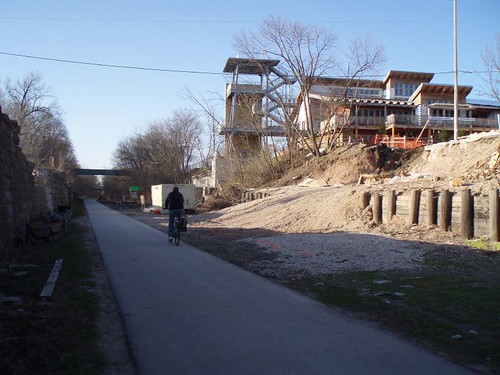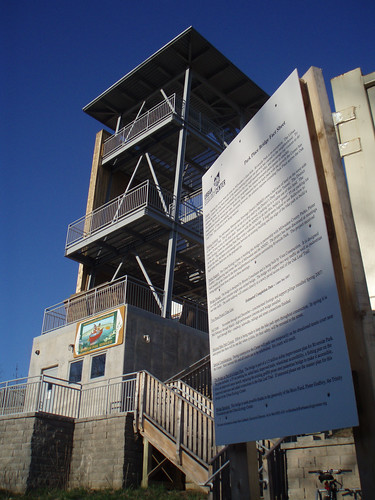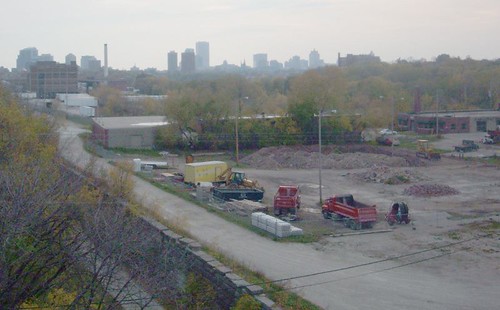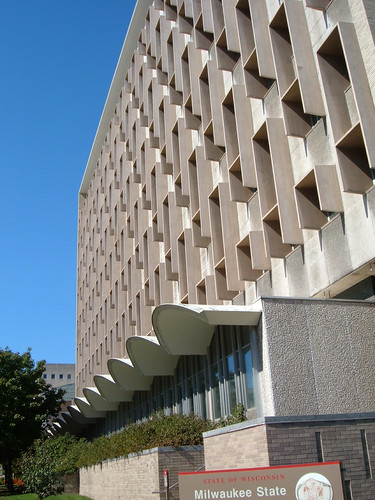I've never quite understood the point of the traffic circle at the south end of the 6th Street Viaduct.

It's a vast space, designed to regulate traffic between the moderately busy 6th Street (an important surface connection between downtown and south city) and... a few unremarkable side streets. And that's it.
To accomplish this pedestrian feat, it devours an entire city block's worth of land:
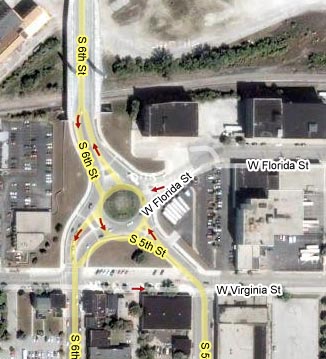
Now maybe there's something going on underground that I'm not aware of, sewer lines or utilities or unstable soils or sacred Indian burial grounds, but it sure seems to me like 6th Street could've just continued straight off the viaduct.
I've likewise never understood people's fascination with traffic circles. In my experience (mostly in New Jersey), they're difficult to navigate, and harrowing for a first-time traveller. There's no way of knowing what lane you need to be in till you're already past where you wanted to go, and your circular path makes it that much harder to check behind you for someone in the lane to your right.
More to the point, the 6th Street roundabout was completely unnecessary. None of the other streets at this intersection have even moderate volumes of traffic. They could have been terminated with stop signs with no impact on traffic flow. 6th Street only get really busy at rush hour, as downtown workers use it as a longcut to the Interstate a few blocks south. It provides a very poor termination to a bridge that otherwise is all about making connections: downtown to the Menomonee Valley to the south side.
The Wisconsin Department of Transportation cites a study claiming that
roundabouts reduce pedestrian-vehicle accidents. Well, gee, ya don't think that could maybe be because
nobody in their right mind would cross this thing on foot?! Seriously. The cold hard fact is, the Menomonee Valley is over half a mile across, and even with the beautiful new 6th Street Bridge, it's a long, lonely walk from downtown to the south side. Not many people take it on, even on the nicest of days.
This might not seem worth quibbling over, but the useless circle is taking up
an entire city block on the edge of one of the most urban areas of the city. That's a block that should have buildings on it, not grass and concrete. Contrary to what traffic engineers might have you believe, there
are more important things than moving traffic swiftly through town, and not sacrificing entire city blocks to auto traffic is one of them.
